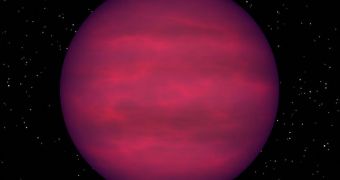Astronomers have recently discovered a small and weird population of stars in a cluster located some 20,000 light-years away from us. They say that these objects look very much like brown dwarfs, but add that something about them doesn't quite make sense.
For instance, measurements of the objects conducted in infrared wavelengths have revealed that their surface temperatures are in the 1,700 to 2,2000 degrees Kelvin range, which is about right for brown dwarfs, but not quite.
Theoretically, these stars are located at the blurry boundary between very large gas giants and small, failed stars. However, classifying exactly where they fit in is a matter of perspective, and debates over putting together a potential system of classification are still raging on.
The cluster was also photographed with the NASA Hubble Space Telescope, which managed to identify 9 such objects. All of them were located in the young stellar cluster NGC 3603, and were found to be too cool to merit being cataloged as fully-fledged stars.
Once this was established, researchers found themselves in a pickle, so to speak. They were seeing brown dwarfs that should have theoretically been invisible if they were actually such stars.”We were quite puzzled,” Loredana Spezzi explains.
The expert holds an appointment with the European Space Agency's (ESA) European Space Research and Technology Center (ESTEC) in Noordwijk, western Netherlands, Daily Galaxy reports.
One potential explanation for the existence of this peculiar cluster is that it was once home to a number of exoplanets, which the nine peculiar brown dwarfs then consumed and destroyed entirely. A star can easily disintegrate a planet that strays too close to its surface.
This happens through the action of tidal forces, of the same time that force the Moon to always keep the same face oriented towards Earth, and which causes tides in our planet's oceans. Working together with gravity, these forces can literally shred a planet to pieces.
Astronomers with the research team believe that this is what happened in the newly-found cluster. They hypothesize that exoplanets around these objects simply strayed too close to their parent stars' surfaces.
This destroyed them, but also contributed to inflating the brown dwarfs, making them visible from such a great distance, despite their tremendously low temperature. Details of the new work will appear in a paper accepted for publication in an upcoming issue of The Astrophysical Journal.

 14 DAY TRIAL //
14 DAY TRIAL //